How to Make New York-Style Cheesecake

So OK, it’s not straight-up New York. I added a cookie crumb crust at the last minute. But it looks pretty good, n’est-ce pas? It tastes good too. And that’s coming from a guy who really isn’t wild about cheesecake. This is a very simple thing to prepare and it goes like this…
Preheat your oven to 350 and set a rack on a middle shelf. Prepare your springform pan according to the How to Prepare a Cake Pan for Baking post to the right. Have it standing by along with a roasting pan or other shallow baking dish. Put on a kettle or pan of water to simmer. Have all your ingredients at room temperature.
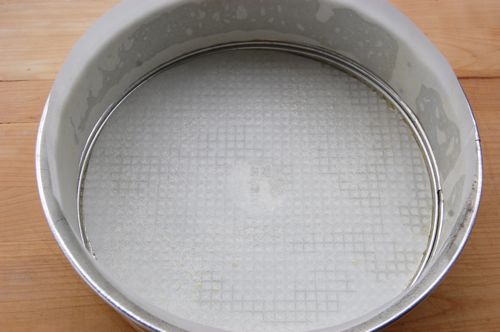
Combine your cream cheese, sugar and salt in the bowl of a mixer…

…and beat several minutes until smooth and creamy, scraping once or twice during the process. Add in your vanilla and beat about 20 seconds more. Scrape.
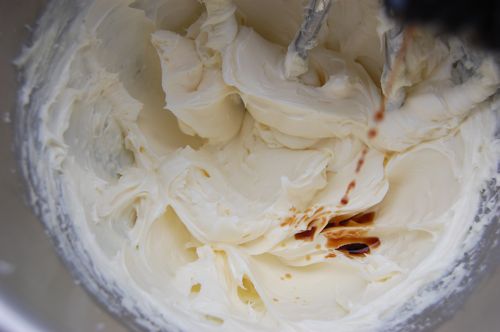
Then beat in the eggs one by one, again, scraping once or twice along the way.

When all the eggs have been incorporated, add the sour cream in three additions, and — you guessed it — scrape! Mix a few seconds more.
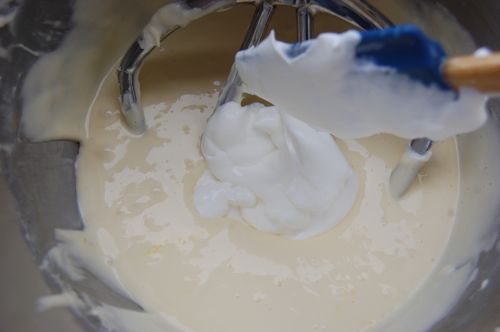
Pour the mixture into the prepared pan.
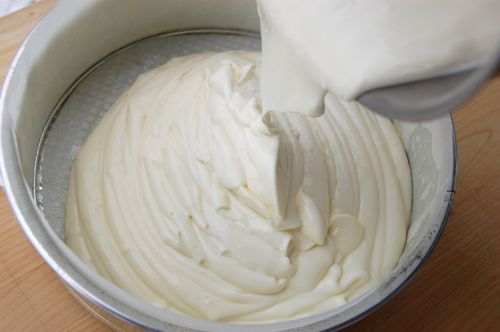
Set the pan on two cris-crossed pieces of aluminum foil and bring up the ends to form your “boat”.
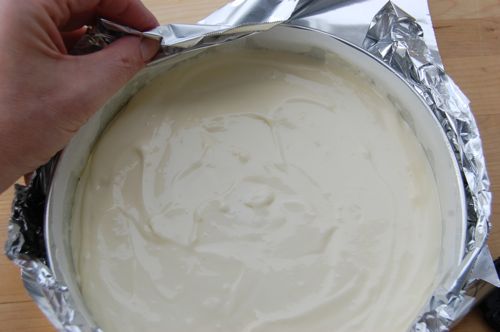
Put the foil-lined pan in a larger shallow pan, and add an inch or so of simmering water.
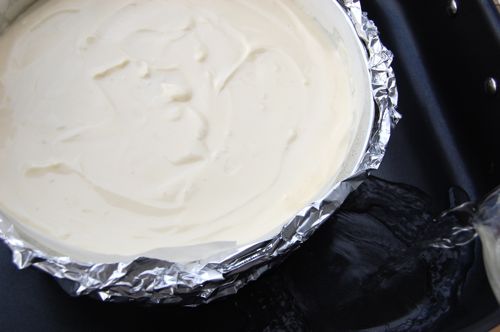
Bake 45 minutes at 350, then turn off the oven and — without opening the oven door — bake for an additional hour as the oven cools. You should have something that looks about like so:

Allow the cake to cool for at least an hour at room temperature, then chill it for a minimum of six hours, preferably overnight. The next day, remove the ring and the parchment paper, slice and serve.

OR, add a crust. Yes, you can add on a graham cracker crust if you want to before you bake it. That will make things a little easier as well as help the cake release from the pan. But here’s my problem with standard graham cracker crusts: they’re very sweet and awfully buttery (this cake is plenty rich as it is), but more than that they just get soggy, which means they offer little in the way of a counterpoint to the filling. Solution? Pat on some cookie crumbs just before serving. But first ya gotta flip the thing over. Apply some plastic wrap, then a cardboard cake circle to the top:

Flip the cake over and take off the pan bottom and the parchment.

Pat on some crushed cookies. You can use just about anything. What are these? Why, animal crackers. Hey, I’ve got kids, I use what’s handy. I like them because they’re very crispy and light without being intensely sweet. For those of you in other parts of the world who don’t have access to animal crackers, tea biscuits (which Natasha over at Sweet Discovery suggests you toast before using) are a close equivalent. Spread them all around, patting them down only lightly.
You could add crumbs to the side at this point, but I prefer to flip the cake first. The longer the cake sits upside down at room temperature, the greater the risk that the top will stick to the plastic wrap.
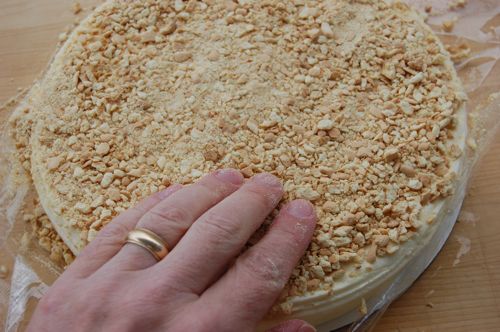
So then, apply another upside-down cake circle and flip your cake circle sandwich over.
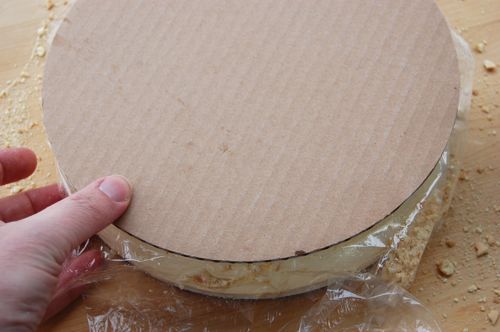
Press the cheesecake down lightly to push the crumbs onto the bottom of the cake a bit. Remove the first circle and the plastic wrap — see? the cake is no worse for wear — then…
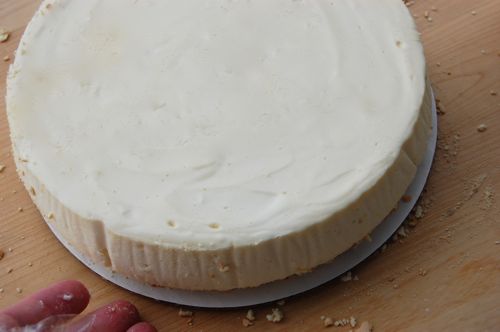
…apply more cookies crumbs to the sides:
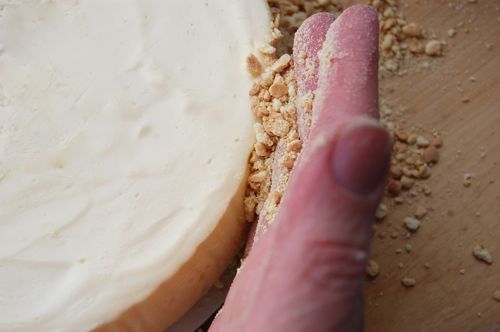
Slice and serve!
Your method seems like it would incorporate a lot of air, any thoughts on bubbles in cheesecake batter?
Hi Ryan!
I’m definitely in favor of bubbles in cheesecake. Most New York style cakes are far too heavy in my opinion. I like to retain the flavor and silkiness without, let’s say, that sinking feeling.
Cheers,
– Joe
Hi Joe,
When I finished beating in the ingredients (I used sour cream+thickened cream), the batter is kinda runny, while your picture shows that they should be a little bit firmer. What could I have done?
HI Jade!
It shouldn’t make too much of a difference in the final product. Did it not set up in the oven?
– Joe